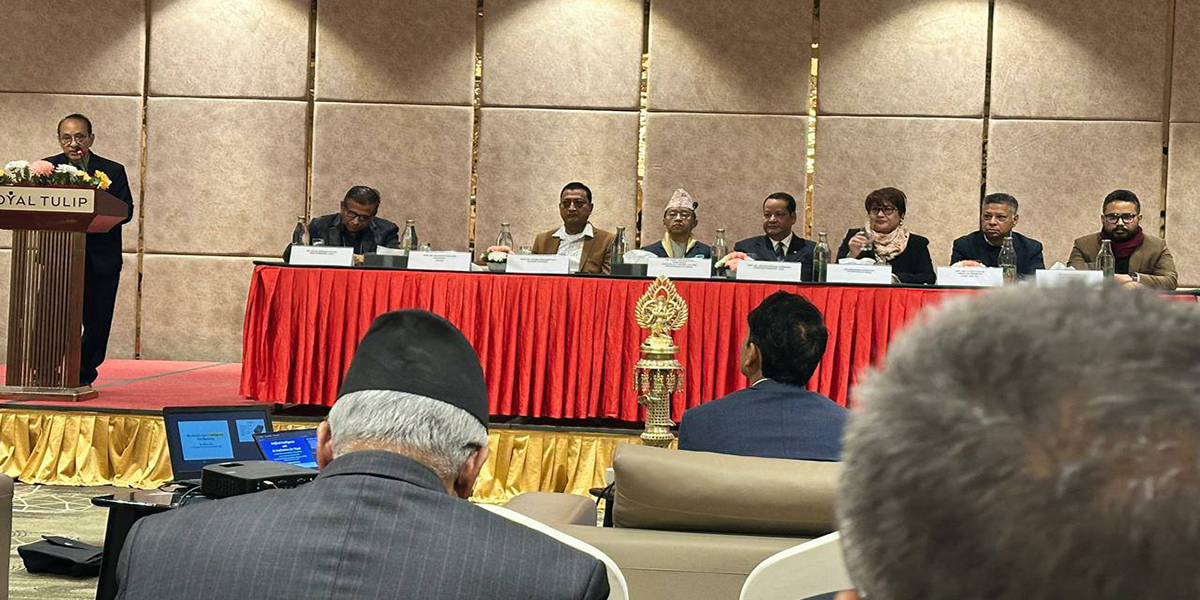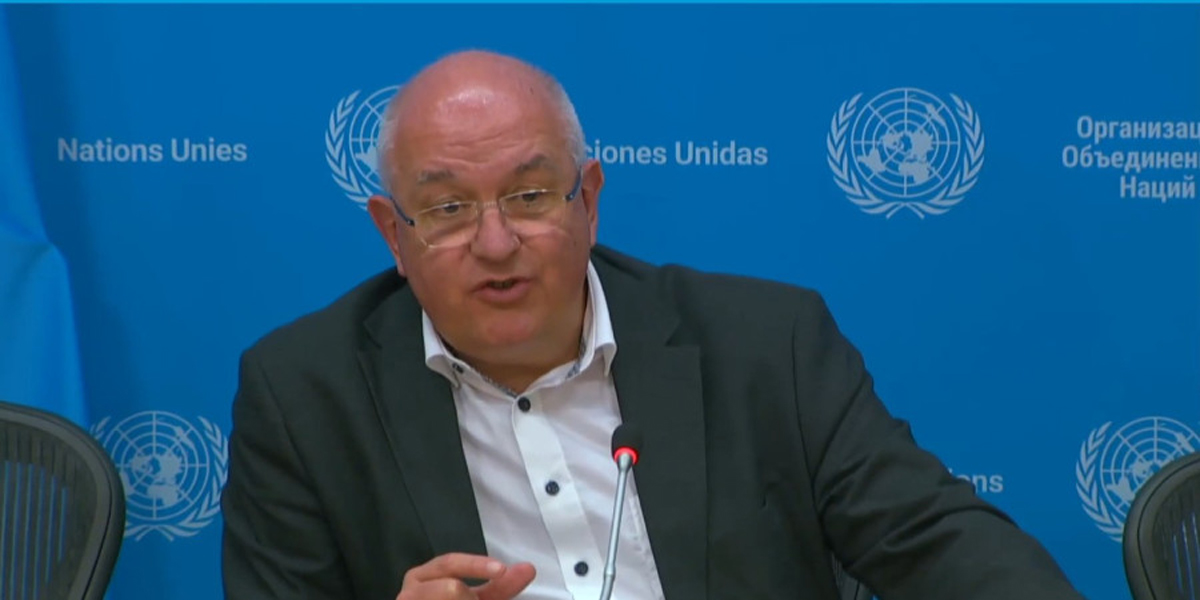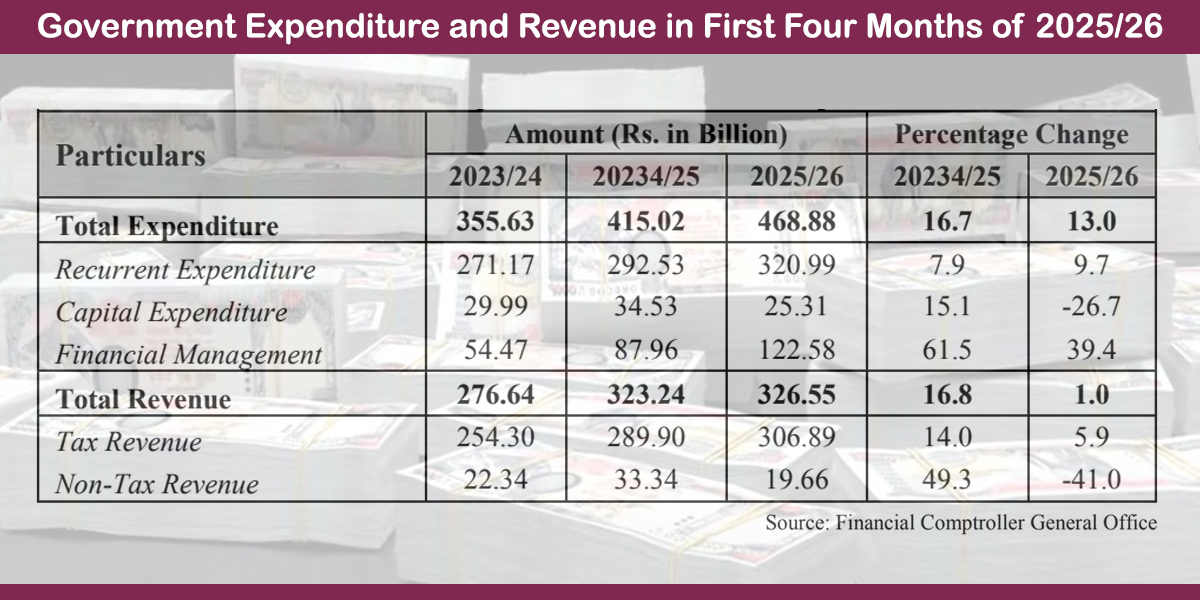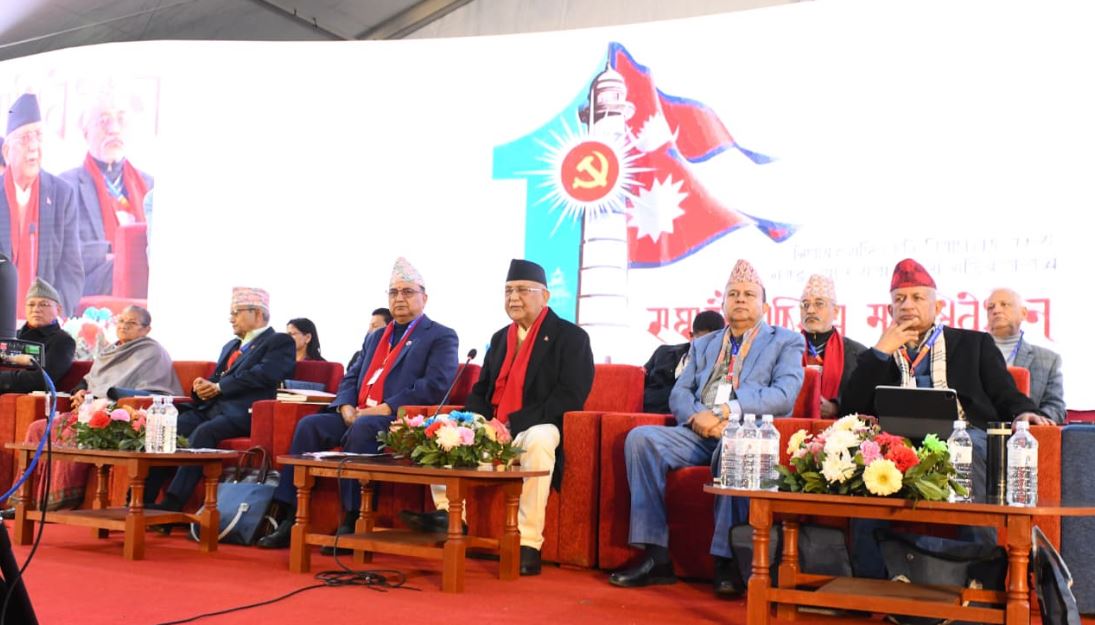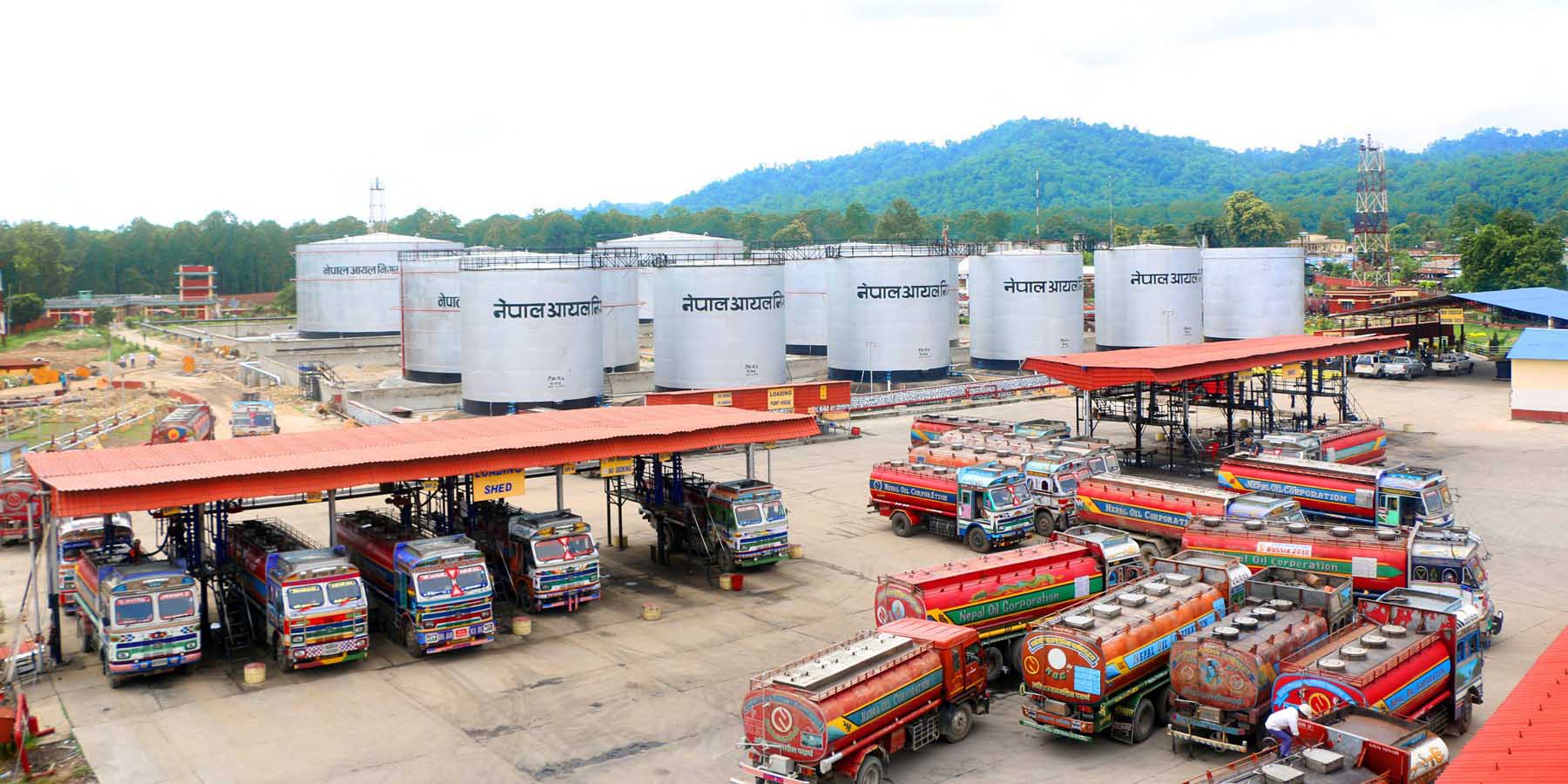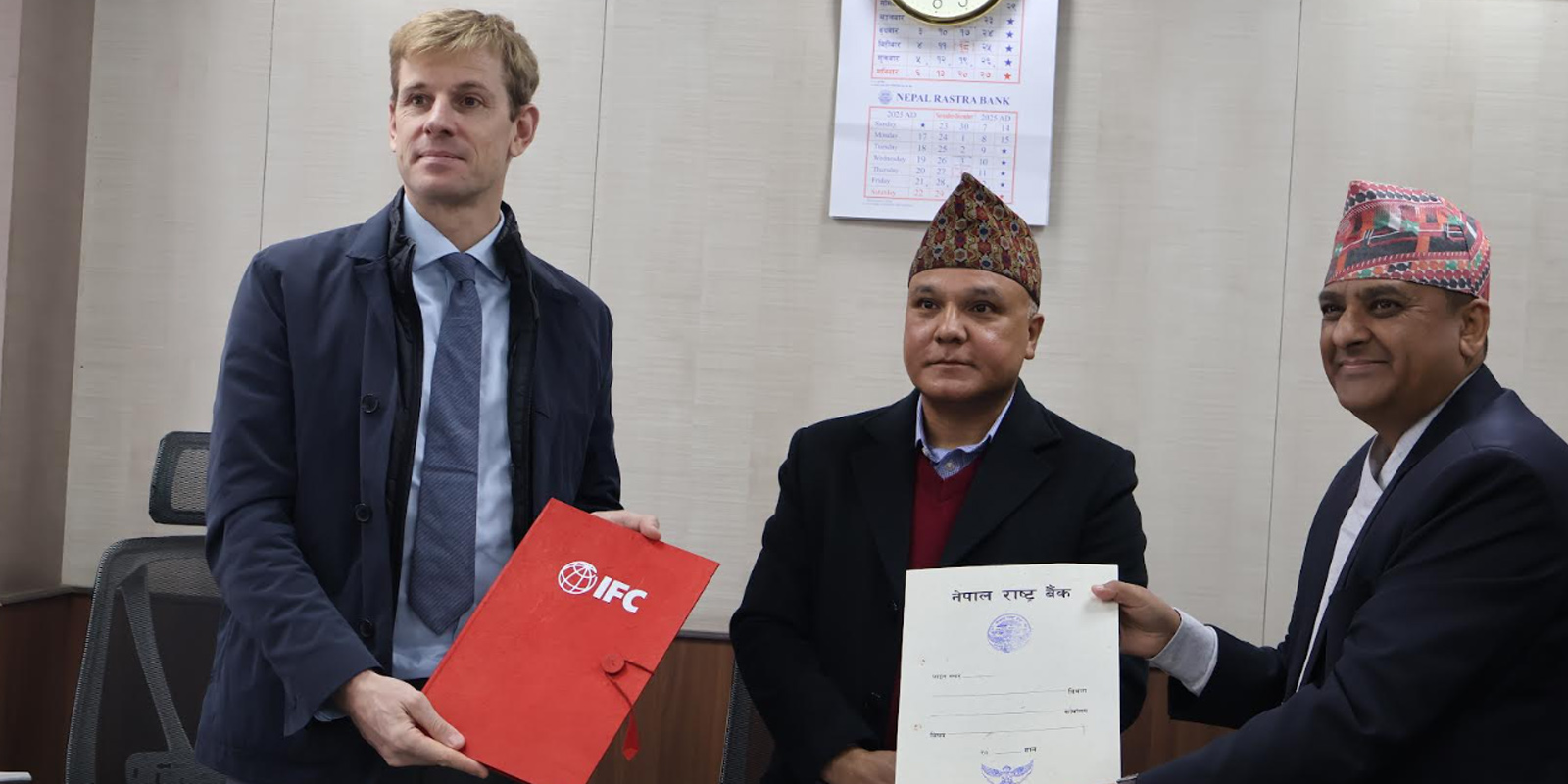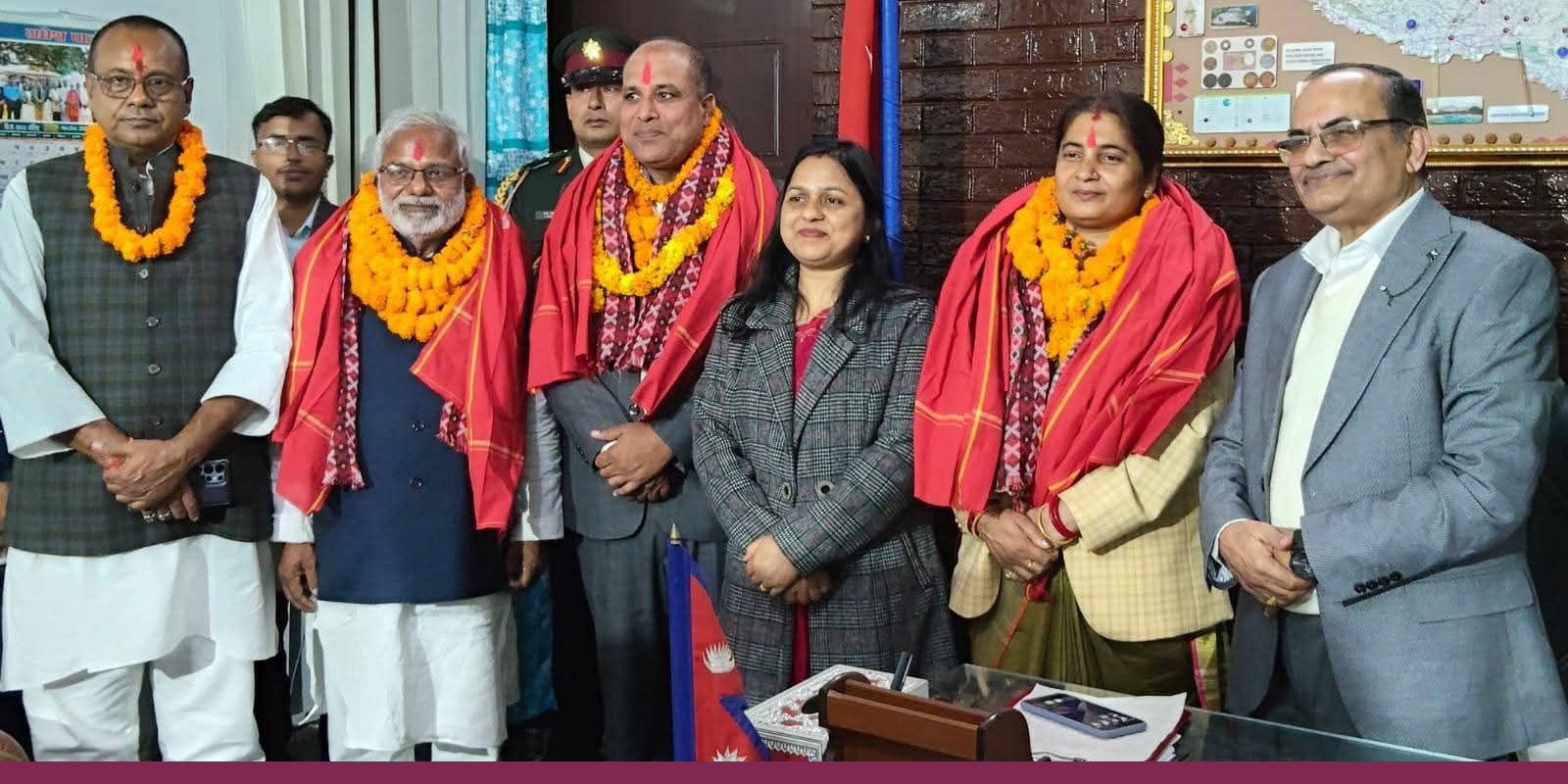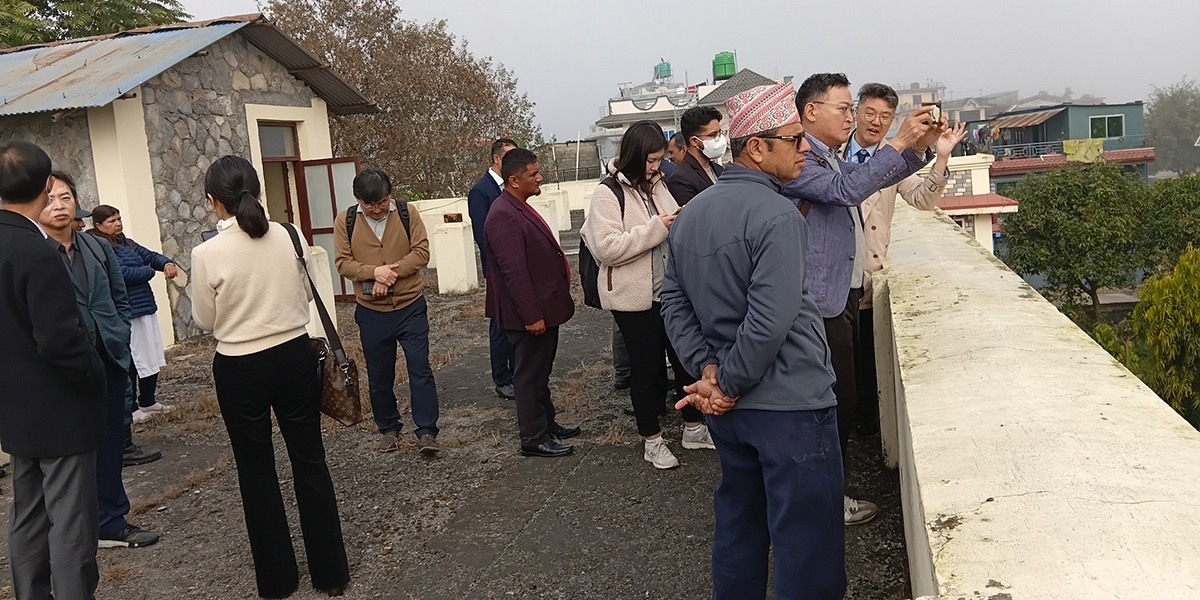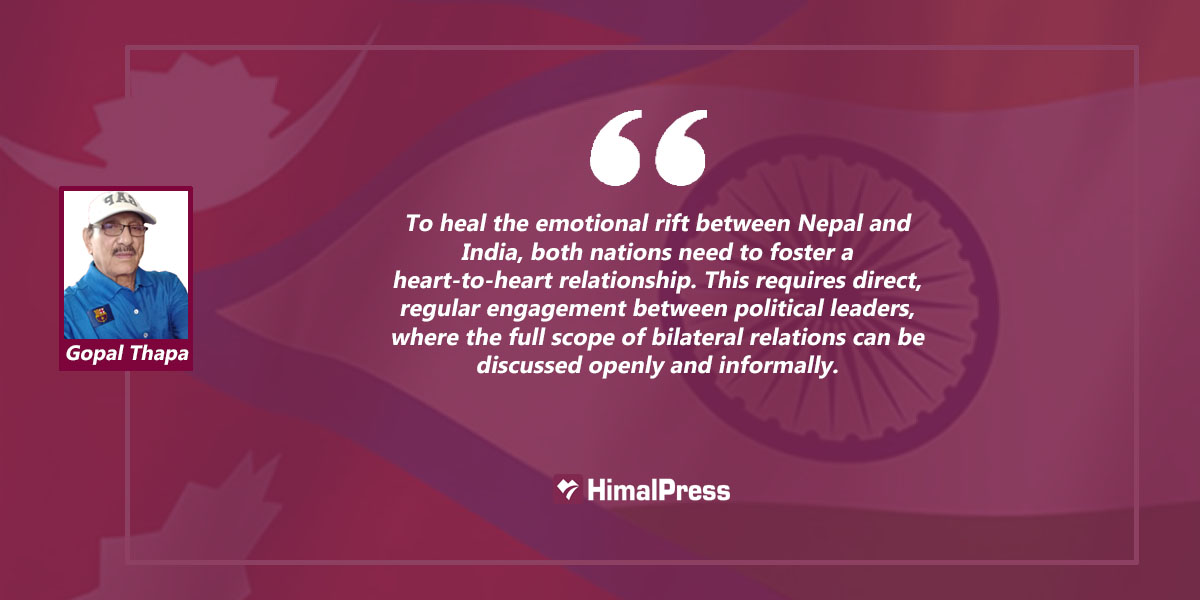
Relations between Nepal and India reflect a complex interplay of light and shade. It is characterized by both prosperous and challenging periods. Multiple factors and actors have shaped these bilateral relations, weaving together threads of geography, culture, religion and shared borders.
The geographical bond between the two countries runs deep, with similar terrains that shape the destiny of both peoples. As predominantly agricultural economies, both countries depend heavily on monsoon rains for sustenance. When the monsoon falters, both nations suffer; floods in one country inevitably affect the other, underscoring the inextricable environmental connection between the two countries.
The cultural and religious ties binding the two countries prove even more resilient than geography. While governments and political systems may change, the deep faith and traditions shared by the people remain unshaken. Sacred sites dot both landscapes – Pashupatinath, Muktinath, Janakpurdham, and Lumbini in Nepal; Bishwanath, Badrinath, Kedarnath, and Saarnath in India. These spiritual centers have long served as places of worship and solace for people from both countries. Similarly, festivals like Vijaya Dashami, Dipawali, Chhath and Vaishakha Poornima continue to be celebrated with equal fervor across our borders.
Yet while shared geography, culture, and religion unite these two countries, borders define them as separate nations. Nepal shares borders with India on three sides, making border relations both crucial and complex. The border situation presents three distinct challenges: general demarcation, territorial disputes and the management of open borders. While most border demarcation issues have been resolved, the dispute over Limpiydhura, Lipulek, and Kalapani remains a serious point of contention. India’s recent incorporation of these regions into its political map, and Nepal’s subsequent counter-response, has created tension. Although India has expressed willingness to resolve this through diplomatic dialogue, it is unwilling to sit for dialogue.
The open border between the two countries has both pros and cons. It stands as testimony to the unique relationship between the two countries, facilitating vital socio-economic and cultural exchanges. For Nepal, with its India-dependent economy, the open border is particularly crucial. Even for India, a regulated border may have serious security, economic, social and political implications. This reality demands vigilant monitoring from both sides to prevent cross-border crimes while preserving the benefits of open access.
The Actors
As stated earlier, people, politicians and bureaucrats are the key actors who render our bilateral relations dynamic. The people of both countries have consistently been a positive force in this relationship. Indeed, the robust people-to-people connections have served as a crucial buffer during diplomatic tensions. This harmony stems from the shared culture, religion, traditions and way of life, which have united peoples across borders.
The southern region of Nepal, known as the Tarai, shares what is locally called “roti beti ki sambandha” (bonds of bread and brides) with the neighboring Indian states of Bihar and Uttar Pradesh. This unique relationship exemplifies the deep connections between the two nations. Time and again, it has been the common people of both countries who have weathered political, economic, security, and administrative challenges, particularly those created by the Indian bureaucratic establishment.
Even during the harsh economic blockades imposed on Nepal by the Indian establishment, people from both nations demonstrated remarkable resilience and solidarity. Indian citizens from border regions quietly helped their Nepali neighbors with essential supplies during these difficult times. History attests that Nepal-India relations have never soured due to animosity between their. Such conflicts will never arise at the people-to-people level. Today, thousands of citizens from both countries cross the border for work, living and working safely in each other’s nations. Notably, there has never been a recorded instance of widespread anti-Nepalese or anti-Indian riots in either country.
Bureaucratic Actors
Three key principles continue to govern India’s bilateral relations with Nepal: the Buffer Zone Concept, Enlightened Firmness, and Benign Neglect. Each of these principles, inherited and refined over decades, shapes the complex dynamic between these neighboring nations.
The Buffer Zone concept, originally coined by the British, views Nepal as a strategic buffer between India and China, similar to Afghanistan’s historical role between British India and Imperial Russia. This perspective continues to influence modern Indian foreign policy, with India considering Nepal as its exclusive strategic backyard. This colonial-era thinking persists in modern diplomatic relations, fundamentally shaping India’s approach to its smaller neighbor.
The Indian concerns about China’s presence in Nepal appear disproportionate and unfounded, especially given India’s own extensive economic ties with China despite border disputes.
Enlightened Firmness, coined by Sardar Vallabhbhai Patel in his correspondence with Nehru, was later institutionalized in the hastily concluded 1950 Indo-Nepal Peace and Friendship Treaty. Each article of the treaty echoes what Patel had suggested. Its practical manifestation includes economic blockades and bureaucratic pressures used to align Nepal with Indian interests.
The principle of Benign Neglect manifests through India’s overbearing attitude and condescending behavior toward Nepal. There was a time when the Indian ambassador used to sit in cabinet meetings like a viceroy and interfere in Nepal’s internal affairs. It took the resolve of Prime Minister BP Koirala to end this intrusive practice. This principle was countered during King Mahendra reign when the Kathmandu-Kodari road to the Chinese border with Chinese assistance. It was a direct challenge to Indian influence. Though India responded with economic sanctions, these proved futile. King Mahendra initiated several other measures to reduce Nepal’s overdependence on India.
King Mahendra and his successor King Birendra did not allow Indian bureaucrats to interfere in Nepal’s foreign policy handling. This was because the monarchs maintained a studied distance from India. They displayed credible and consistent behavior which earned them respect even from the late Indian Prime Minister Indira Gandhi.
Later, the ‘two pillar system’ was introduced which continued to govern Nepal-India relations until King Gyanendra took over. In the federal republic, a new theory, controlled instability, has been used to define bilateral relations.
India’s approach to Nepal continues to be governed by these three fundamental principles which permeate every aspect of bilateral relations between the two nations.
The buffer zone mentality persists, with India viewing Nepal primarily as a cushion against potential Chinese incursion. When Nepal shows any indication of strengthening ties with its northern neighbor, India’s response is swift and often harsh. The principle of benign neglect manifests through India’s overbearing attitude and condescending behavior – a reality evident to all observers.
The Indian establishment bears primary responsibility for perpetuating this patronizing approach toward Nepal. As a result, the aspirations of the Nepali people have never truly resonated with Indian policymakers. Qualities like large-heartedness, tolerance and understanding remain scarce in this relationship. Despite India now being led by its third generation of post-independence leaders, its bureaucracy remains trapped in what many characterize as a “mercantile mentality.” This colonial mindset, many argue, prevents India from exercising meaningful regional and international influence. The establishment’s reflexive intolerance and arrogance toward neighbors who display independent thinking is particularly telling. When confronted about Nepal, Indian officials typically resort to diplomatic platitudes about supporting “a peaceful, prosperous and stable Nepal” and respecting Nepali sovereignty – promises that rarely translate into action.
India’s perception of Nepal as its exclusive strategic backyard continues unabated. Even innocent economic and infrastructure engagements with other nations are viewed with suspicion. The Indian concerns about China’s presence in Nepal appear disproportionate and unfounded, especially given India’s own extensive economic ties with China despite border disputes. Yet when Nepal seeks similar economic and transit relations with China, India creates bureaucratic obstacles. For example, India has refused to import electricity built by Nepal in partnership with China. This suggests a deliberate strategy by the Indian bureaucracy to maintain Nepal’s economic dependence on India. Nepal’s efforts for trade diversification have always met with one or the other bureaucratic hurdles.
Rein In the Bureaucrats
The Indian government should aim to rein in its bureaucrats to minimize unnecessary influence. Efforts must be made to foster direct, heart-to-heart engagement between political leaders, where all aspects of bilateral relations can be openly discussed without bureaucratic interference. Allowing bureaucrats and security officials excessive freedom in managing sensitive matters, such as the sensitive India-Nepal relations, has been a big mistake on the part of the Indian government. This is not to dismiss the value of expert bureaucratic input, but it should be offered only when specifically required by political leaders.
Indian Prime Ministers seem to understand the importance of this, yet fail to establish a truly equal footing in Nepal-India relations. Such apprehensions are unwarranted, especially given India’s growing economic engagement with China and other SAARC countries. If the Modi government is serious about its professed goals, it should not hinder Nepal’s efforts to expand its international relations, particularly in trade, economic development, and connectivity. Economic cooperation can open doors to broader strategic interactions, as countries with diverse political ideologies have already demonstrated by collaborating for mutual benefit in a globalized world.
Nepal-India and India-China relations, like all international ties, face challenges. However, the potential benefits of closer cooperation are immense. India should stop viewing Nepal’s growing ties with China solely through a geopolitical or security lens. The assumption that China’s increasing involvement in Nepal undermines India’s interests is baseless.
Similarly, India’s suspicion of Western involvement in Nepal stems from its view of Nepal as its traditional sphere of influence. While Western assistance has both positive and negative implications—some of which have faced criticism even in Nepal—much of this aid is intended to support Nepal’s socio-economic development. However, Nepal must ensure that such aid is directed toward agreed-upon priorities, such as infrastructure, industrialization, and energy development, and does not serve hidden agendas detrimental to its own or its neighbors’ national security interests.
Political Actors
Relations between countries, whether big or small, developed or developing, should be based on equality and mutual respect. Over the past few decades, many Nepalis have felt that Nepal has been a victim of “benign neglect” by Indian politicians. Nepalis often observed that Indian Prime Ministers showed little interest in reciprocating the numerous visits made by Nepali Prime Ministers to Delhi. Indian foreign ministry bureaucrats frequently ignored the “principle of reciprocity” typically observed in high-level diplomacy. While Indian Prime Ministers seldom visited Nepal, every new Nepali Prime Minister was expected to make a trip to what is mockingly referred to as the “Delhi Durbar” in Nepal, as if to present their political allegiance.
It is widely believed that one Nepali Prime Minister, who broke the tradition by visiting China before India, incurred the disapproval of the Indian establishment—ultimately leading to his downfall. This condescending attitude hurt the Nepali people deeply and caused a significant emotional strain in bilateral relations. This behavior may have fueled anti-Indian sentiments in both countries, exacerbating tensions. Unfortunately, neither side made any genuine efforts to correct the growing misperceptions. Some experts wrongly believed that frequent high-level exchanges could have mended this rift and diminished the anti-Indian sentiment.
Indian Prime Minister Narendra Modi’s visit to Nepal – the first visit by the Indian Prime Minister in 17 years, sparked excitement and optimism in Nepal. However, this enthusiasm quickly faded when, shortly after Nepal promulgated its new constitution, India imposed a severe economic blockade. This incident shattered the long-held belief among diplomats that high-level exchanges alone could improve relations. Instead, it proved that international or bilateral relations are shaped by vital national interests.
Despite this, regular high-level visits between Nepal and India remain an important aspect of foreign relations and should continue to be so. Nothing more is required to describe the practice of the principle of benign neglect and condescending behavior than this!
In India, it is often the bureaucrats or the establishment that dictate the course of action, with politicians, with the exception of Nehru and Indira Gandhi, largely following their lead in matters of foreign policy and security, especially regarding neighboring countries. This is because of the Indian bureaucracy’s institutional knowledge and deep understanding of regional affairs. In contrast, the situation in Nepal is markedly different. Nepali bureaucrats are often viewed as passive, subservient and merely executing the orders of their political leaders. Consequently, the most culpable elements behind Nepal’s current challenges are many of its politicians, though not all, who are intellectually shallow and morally compromised. Since the 1990s, these politicians have been known for praising India when it suits them and criticizing it when they lose favor.
Privately, many Nepali politicians are all too willing to seek personal favors from Indian diplomats and bureaucrats. Such acts weaken their moral standing and prevent them from showing courage when it matters.
Their inability to prioritize national interests and engage boldly and knowledgeably with India has emboldened Indian ambassadors to breach diplomatic protocol by freely meeting Nepali ministers. Meanwhile, Nepali prime ministers and ministers eagerly line up to meet any visiting Indian official, disregarding diplomatic norms and code of conduct. In the past, when a prime minister appointed by the King visited India, the Indian Prime Minister would personally receive him at the airport. Now, a mere minister of state welcomes our prime ministers — a deeply humiliating shift. This reflects the failure of current Nepali political leaders to earn respect through credible and consistent behavior.
Privately, many Nepali politicians are all too willing to seek personal favors from Indian diplomats and bureaucrats. Such acts weaken their moral standing and prevent them from showing courage when it matters. Nepali political leaders and ministers must stop kowtowing to Indian officials. They must demonstrate consistent and credible behavior and stop meeting diplomats in Kathmandu by violating diplomatic norms.
Additionally, the government must focus on reforming its bureaucracy, making it more analytical, informed, and capable. This requires a complete overhaul of Nepal’s education system. Today’s Nepali bureaucrats are largely products of rote learning in public schools. Graduates of private schools are less inclined to pursue government jobs for two reasons: the Public Service Exam is predominantly in Nepali, and the curriculum is outdated, and seemingly designed for rote learners. As a result, most bureaucrats lack critical thinking, articulation, and subject matter expertise, leading to a lack of confidence in their competence. In the past, politicians feared bureaucrats because they were competent, knowledgeable and honest. Today, however, Nepal’s bureaucracy is highly politicized, less professional, and filled with careerists and opportunists.
Conclusion
One of the key factors behind Nepal’s economic underdevelopment is its lack of access to the sea. The nearest seaport, located at the Bay of Bengal in India, is more than 200 miles from Nepal’s closest border. Moreover, Nepal has only one transit-country neighbor, which is India, leaving it entirely dependent on Indian goodwill and cooperation for economic development and diversification of overseas trade. Unfortunately, despite multiple bilateral and multilateral efforts, Nepal has been denied free and unhindered access to the nearest Indian seaport.
Moreover, poor road conditions, cumbersome Indian customs procedures, bureaucratic red tape, and numerous other hurdles during the transit of goods through Indian territory make Nepali products expensive and less competitive in international markets. This stifles the country’s economic and industrial growth. This example alone highlights the critical role that India’s cooperation plays in Nepal’s economic development. However, India’s own economic progress has also suffered. Both countries have failed to forge meaningful bilateral cooperation in hydropower development due to a lack of trust and confidence. Such cooperation could have helped raise the socioeconomic condition of both nations.
The underlying issue is a mutual trust deficit, which must be addressed for any fruitful economic partnership, whether bilateral or trilateral, to succeed. The idea of trilateral economic engagement holds great promise for all countries involved, should it materialize.
To heal the emotional rift between Nepal and India, both nations need to foster a heart-to-heart relationship. This requires direct, regular engagement between political leaders, where the full scope of bilateral relations can be discussed openly and informally. Relying too heavily on bureaucrats and security officials to manage such sensitive relations has been, and continues to be, a mistake on the part of the Indian government. While bureaucratic expertise should not be disregarded entirely, their input should only be offered when requested by political leaders. Achieving this, however, is as difficult as moving a mountain.
(Thapa is a former Chief of Protocol)




